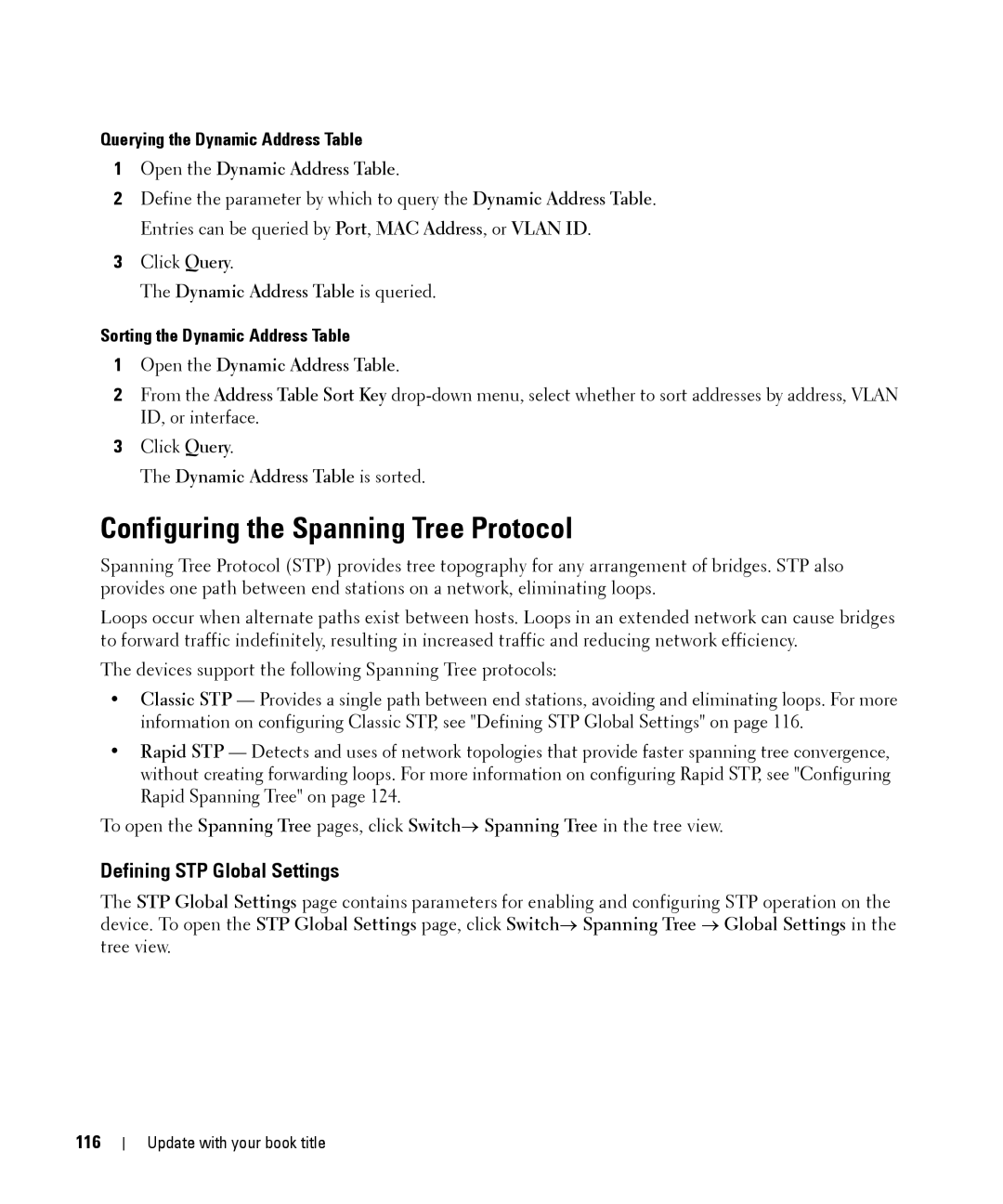Querying the Dynamic Address Table
1Open the Dynamic Address Table.
2Define the parameter by which to query the Dynamic Address Table. Entries can be queried by Port, MAC Address, or VLAN ID.
3Click Query.
The Dynamic Address Table is queried.
Sorting the Dynamic Address Table
1Open the Dynamic Address Table.
2From the Address Table Sort Key
3Click Query.
The Dynamic Address Table is sorted.
Configuring the Spanning Tree Protocol
Spanning Tree Protocol (STP) provides tree topography for any arrangement of bridges. STP also provides one path between end stations on a network, eliminating loops.
Loops occur when alternate paths exist between hosts. Loops in an extended network can cause bridges to forward traffic indefinitely, resulting in increased traffic and reducing network efficiency.
The devices support the following Spanning Tree protocols:
•Classic STP — Provides a single path between end stations, avoiding and eliminating loops. For more information on configuring Classic STP, see "Defining STP Global Settings" on page 116.
•Rapid STP — Detects and uses of network topologies that provide faster spanning tree convergence, without creating forwarding loops. For more information on configuring Rapid STP, see "Configuring Rapid Spanning Tree" on page 124.
To open the Spanning Tree pages, click Switch→ Spanning Tree in the tree view.
Defining STP Global Settings
The STP Global Settings page contains parameters for enabling and configuring STP operation on the device. To open the STP Global Settings page, click Switch→ Spanning Tree → Global Settings in the tree view.
